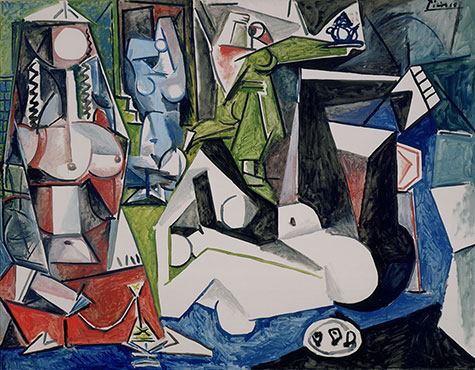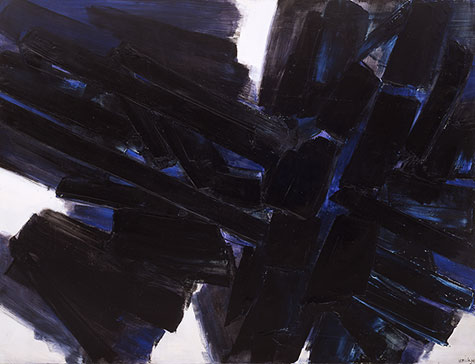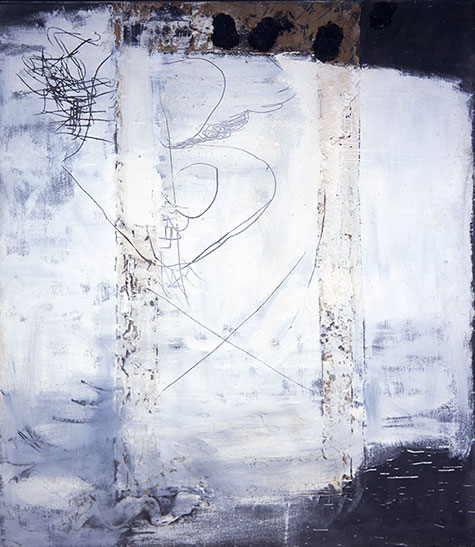
During the 1950s and 1960s, international abstraction played a crucial role in Cold War cultural politics. Abstract Expressionism, with its emphasis on the authentic, unmediated gesture, was seen to represent individual freedom and American democracy. European movements, such as Cobra and art informel, were presented as symbols of hope and revitalization.
In St. Louis, the Mildred Lane Kemper Art Museum (then the Washington University Gallery of Art) emerged as one of the nation’s most important regional centers for postwar abstract art. This was in large part due to the efforts of William N. Eisendrath Jr., a seasoned curator with deep connections to the national and international art world, who served as curator and then director of the collection from 1960-68.
This spring, the Kemper Art Museum will present “From Picasso to Fontana — Collecting Modern and Postwar Art in the Eisendrath Years, 1960-68.” The exhibition will showcase more than 40 works acquired or donated during Eisendrath’s tenure. Included are important paintings and sculptures by American and European artists such as Richard Diebenkorn, Jean Dubuffet, Lucio Fontana, Henri Matisse, Pablo Picasso, Richard Pousette-Dart, Pierre Soulages and Antoni Tàpies.

When Eisendrath arrived at Washington University in September 1960, he followed in the footsteps of two internationally recognized art historians: H.W. Janson and Frederick Hartt. Though not himself an academic, Eisendrath possessed greater institutional experience than either predecessor. A former chair of the Arts Club of Chicago exhibition committee, he organized important shows by Dubuffet, Max Beckmann and Alexander Calder, among many others. Later, as assistant director of the Saint Louis Art Museum, he arranged major surveys on Claude Monet, American painting and contemporary Italian art.
At Washington University, Eisendrath was spurred by the opening of Steinberg Hall — the university’s first permanent exhibition space — to launch an ambitious exhibitions program. This included up to eight traveling exhibitions each year, many of which were organized by the Museum of Modern Art’s Department of Circulating Exhibitions. (One off-shoot of that department, the International Program, was specifically conceived to promote U.S. art overseas and to familiarize domestic audiences with the art of other nations.)
Eisendrath frequently selected exhibitions that complemented the university’s existing strengths, particularly in European modernism and American abstraction. Yet his selections also were guided by his own curatorial experience and by the interests of St. Louis collectors. Indeed, in many cases, the exhibitions had the effect of encouraging donations from a circle of prominent collectors, notably Joseph Pulitzer Jr., Nancy and James Singer, the Sydney M. Shoenberg family, Etta Steinberg and Florence and Richard K. Weil.
For example, among the first exhibitions Eisendrath presented was “New Spanish Painting,” which featured difficult and challenging works by Tàpies, Eduardo Chillida and Manolo Millares, among others. Though it met with tepid local press, the exhibition resonated deeply with the university community and catalyzed a series of significant donations from the Weils and Pulitzer, including Tàpies’ “Porta Marró (The Spanish Door)” (1959), Chillida’s “Rumor de límites No. 4 (Rumor of Limits No. 4)” (1960) and Millares’ “Cuadro No. 82” (1960).

By the time Eisendrath retired in February 1968, the museum had acquired 50 new works of European modernism and cutting-edge, postwar abstraction. Moreover, it had emerged as a significant player in the field of contemporary art. Time Magazine, in a 1967 article, observed that over the previous 20 years — a period that included the tenures of Janson, Hartt and Eisendrath — Washington University had successfully “built its collection into one unmatched by any school in the Midwest.”
“‘From Picasso to Fontana — Collecting Modern and Postwar Art in the Eisendrath Years, 1960-1968” is curated by Karen K. Butler, associate curator of the Kemper Art Museum. An opening reception will take place at 7 p.m. Friday, Jan. 23. The exhibition will remain on view through April 13.
Mildred Lane Kemper Art Museum
The Kemper Art Museum is located on Washington University’s Danforth Campus, near the intersection of Skinker and Forsyth boulevards. Regular hours are 11 a.m.-5 p.m. daily except Tuesdays, and 11 a.m.-8 p.m. the first Friday of the month. The museum is closed Tuesdays.
Support for the exhibition is provided by the William T. Kemper Foundation, the Hortense Lewin Art Fund, the Yeatman Fund, the Sam and Betty Art Exhibition Fund and members of the Mildred Lane Kemper Art Museum.
For more information, call 314-935-4523; visit kemperartmuseum.wustl.edu; or follow the museum on Facebook and Twitter.
